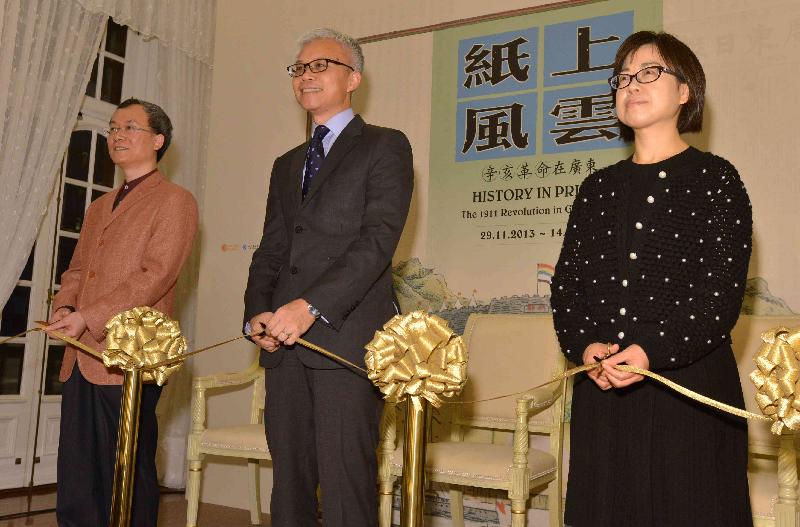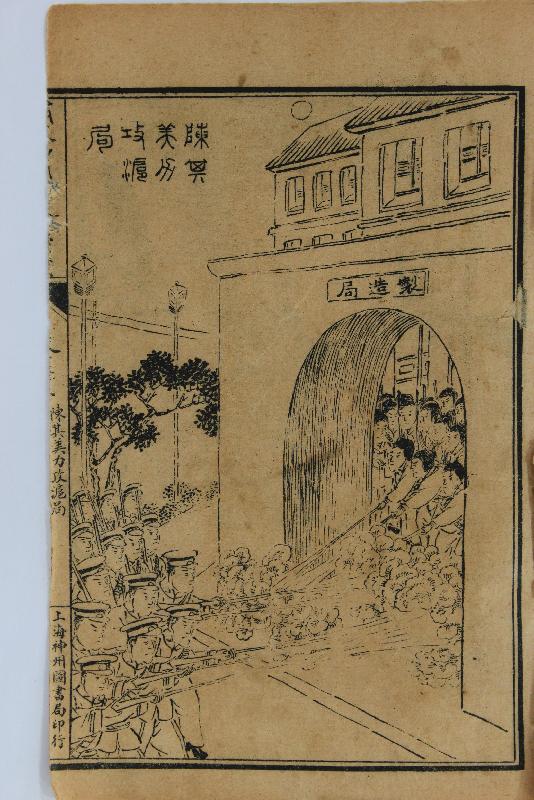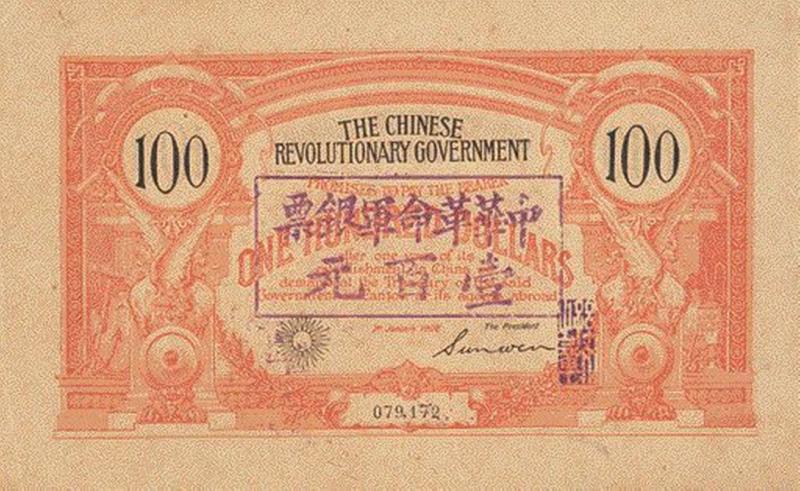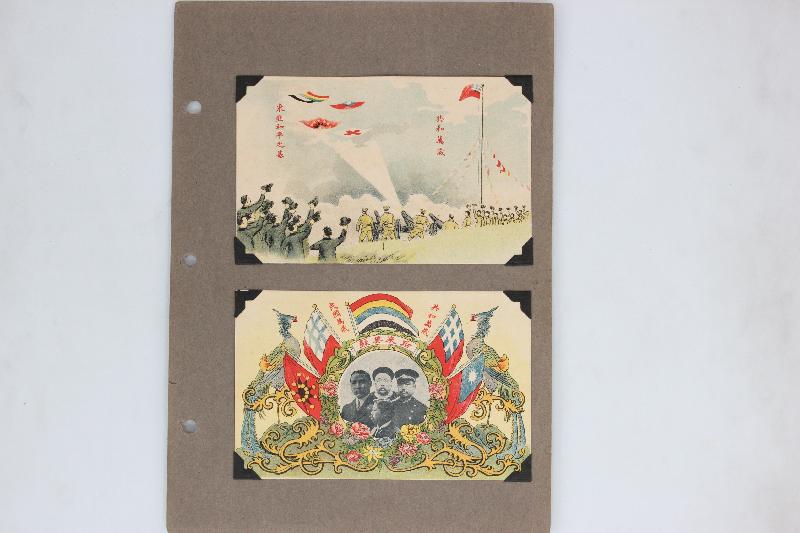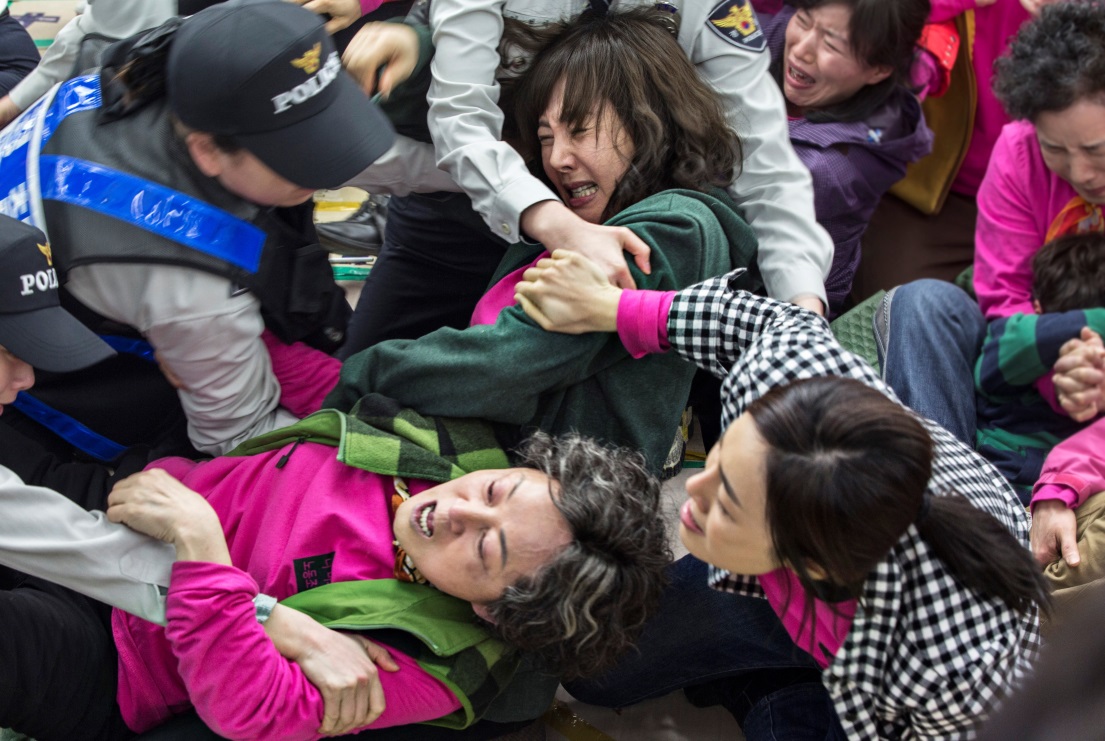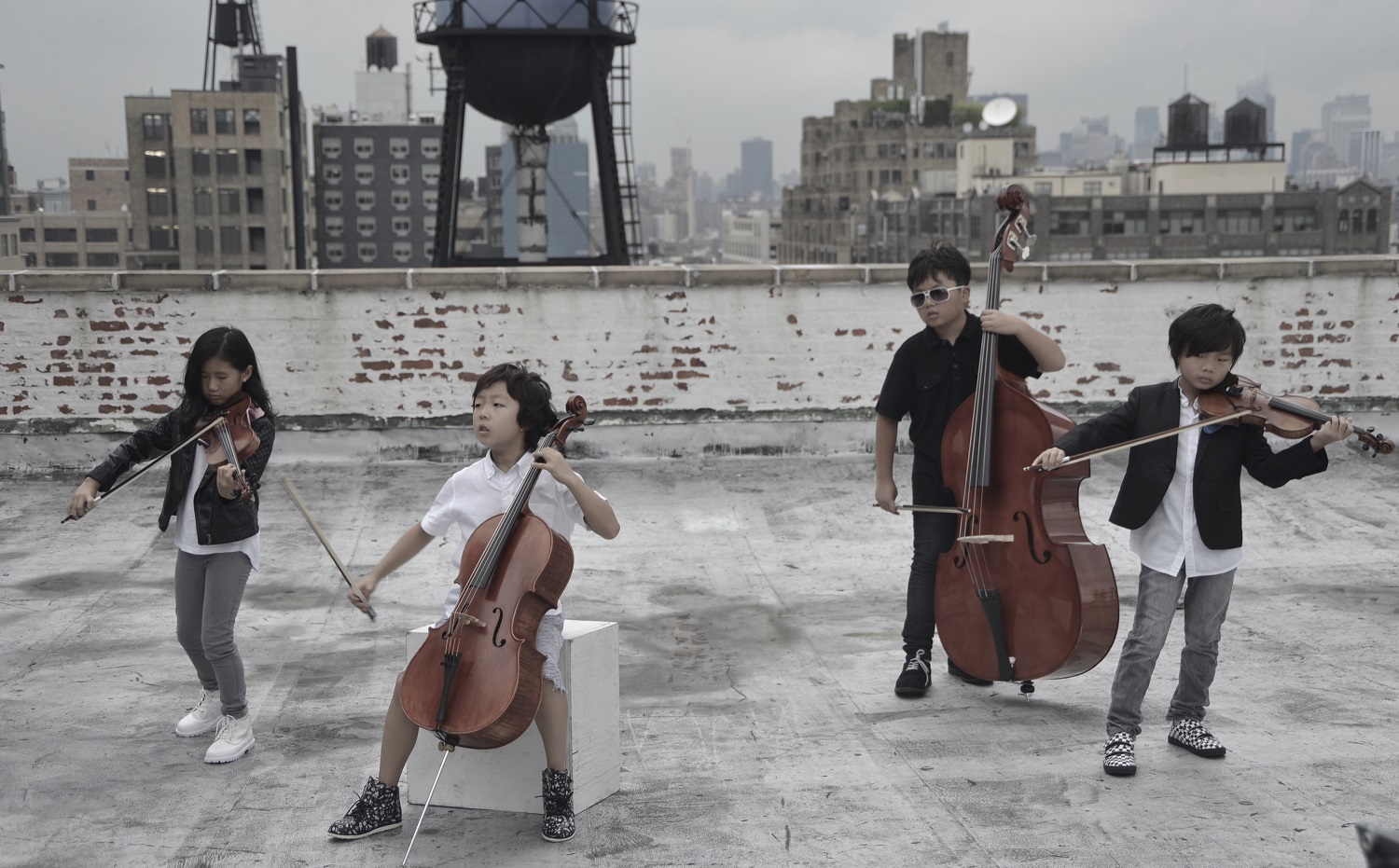Exhibition at Dr Sun Yat-sen Museum
Reviews History 1911 Revolution in Guangdong
The latest exhibition to be launched by the Dr Sun Yat-sen Museum, "History in Prints: The 1911 Revolution in Guangdong", will trace the beginnings of revolutionary activities in Guangdong, as well as how revolutionary thoughts were widely disseminated through newspapers and publications and exerted a deep influence on people in Guangdong.
Picture Show:The opening ceremony of the exhibition "History in Prints: The 1911 Revolution in Guangdong" was held today (November 27) at the Dr Sun Yat-sen Museum. Picture shows the officiating guests at the opening ceremony (from left): the Deputy Director of the Sun Yat-sen Library of Guangdong Province, Mr Ni Junming; the Assistant Director (Heritage and Museums) of Leisure and Cultural Services, Dr Louis Ng; and the Chief Curator of the Hong Kong Museum of History, Ms Susanna Siu. The opening ceremony of the exhibition was held today (November 27) at the Dr Sun Yat-sen Museum. Officiating at the ceremony were the Assistant Director (Heritage and Museums) of Leisure and Cultural Services, Dr Louis Ng; the Deputy Director of the Sun Yat-sen Library of Guangdong Province, Mr Ni Junming; and the Chief Curator of the Hong Kong Museum of History, Ms Susanna Siu. Speaking at the opening ceremony, Dr Ng noted that although the success of the 1911 Revolution took place in Wuchang, the revolutionary campaign originated in Guangdong. The province was also the centre for disseminating revolutionary ideas and played an important role in Dr Sun Yat-sen's revolutionary career, being the place where he first organised uprisings.
Picture shows "Historical Novel on the Restoration of China" written by Wang Xuean. This is one of the earliest books on the 1911 Revolution, with accounts on major events in the late Qing dynasty, such as Dr Sun Yat-sen's kidnapping in London, the founding of the Tongmenghui and the Guangfuhui, the Huizhou uprising, the Battle of Hekou, the execution of Qiu Jin, the Huanghuagang uprising, the assassination of the Prince Regent Zai Feng by Wang Jingwei, the Railway Protection Movement, the Wuchang uprising, the independence of the 17 provinces, the battle over Nanjing, the North-South Peace Talks, the abdication of Emperor Xuantong and the founding of the Chinese Republic. After the defeat in the Opium War, Guangzhou became one of the cities that opened up to foreign trade, extending Western states' economic influence to various parts of Guangdong. To fight against foreign powers and Qing government rule, the people of Guangdong instigated a number of campaigns. Meanwhile, the advanced economic development in Guangdong provided the material foundation for the anti-Qing revolutionary activities.
Picture shows the "Guangdong Dialect Paper" that went into print on May 2, 1907, in Guangzhou with writers Wong Sai-chung and Ou Boming among the contributors. It was a vernacular publication founded by revolutionaries in Guangzhou. In Issue 5, on display in the exhibition, the "Assembly" section discusses such modern topics as gender equality using the local Cantonese in a lively written style. Guangdong was a prominent region in revolutionary activities organised by members of the Tongmenghui (Chinese Revolutionary Alliance), which was jointly founded by Dr Sun and other revolutionary organisations. The revolutionaries in Guangdong used the press as a platform to advocate the revolution and reported the uprisings that happened in various places, expanding the influence of revolutionary thinking. This made Guangdong a centre for the spreading of revolutionary ideas in China. After the success of the 1911 Revolution, many publications were published in succession, including books, image records, calendars and postcards. These publications serve as important records of the campaign, and provide an indispensable foundation for later research into the uprisings of the late Qing dynasty and the early Republican period.
Picture shows a military bond issued by the Tongmenghui. In order to raise funds for the uprisings, the Tongmenghui printed 10 000 military bonds at the denomination of $100 in French Indo-China (present-day Vietnam) in 1906. The face of the bond was printed in English and the reverse side in French. The proceeds of the bond sales were used to support the uprising in Chaozhou in early 1907 and the Zhennanguan uprising later that year. This exhibit is provided by Dr Otto Lam. Featuring more than 100 relics and historical photos provided by the Sun Yat-sen Library of Guangdong Province as well as the Hong Kong Museum of History's collection, including publications published in Guangdong around the time of the 1911 Revolution, and books and images related to the campaign, the exhibition will give visitors an idea of the development of revolutionary activities in Guangdong. Among the exhibits are a host of newspapers and publications that were published in places like Guangzhou and Hong Kong around the time of the 1911 Revolution. They show how the intelligentsia made use of the emerging mass media as the publicity platform to disseminate revolutionary thoughts to the public. The Dr Sun Yat-sen Museum Location:7 Castle Road, Mid-Levels, Central, Hong Kong. Opening: From 10am to 6pm from Monday to Friday and from 10am to 7pm on Saturdays, Sundays and public holidays. The museum will be closed at 5pm on Christmas Eve and Lunar New Year's Eve. It is closed on Thursdays (except public holidays) and the first two days of the Lunar New Year. The standard admission fee: $10 and $7 for group visitors. Full-time students, people with disabilities and senior citizens aged 60 or above can enjoy a half-price concession. Free admission is available every Wednesday.
Picture shows the publication entitled "A Brief History of the Revolutionary Work of Xingzhonghui Members". It was edited by Huang Dahan and published in 1929. This book documents the revolutionary work of 15 Xingzhonghui (Revive China Society) members, including the deeds and contributions of Hong Kong tycoon Li Ki-tong. A native of Xinhui, Guangdong, Li joined the Xingzhonghui upon referral by Tse Tsan-tai. Over the years, he made generous donations to the revolutionary cause, offering financial support to the China Daily and providing military funding to uprisings across the nation. He also let the revolutionaries use Castle Peak Farm, his property in Tuen Mun, Hong Kong, to test firearms.
For exhibition details, please call 2367 6373 or visit the Dr Sun Yat-sen Museum's website at www.lcsd.gov.hk/CE/Museum/sysm/en/permanent_exh_print.php
Picture shows "Postcards of the Republic of China", published in Shanghai in 1912. This set of postcards was published in celebration of the founding of the Republic of China.
|
|





